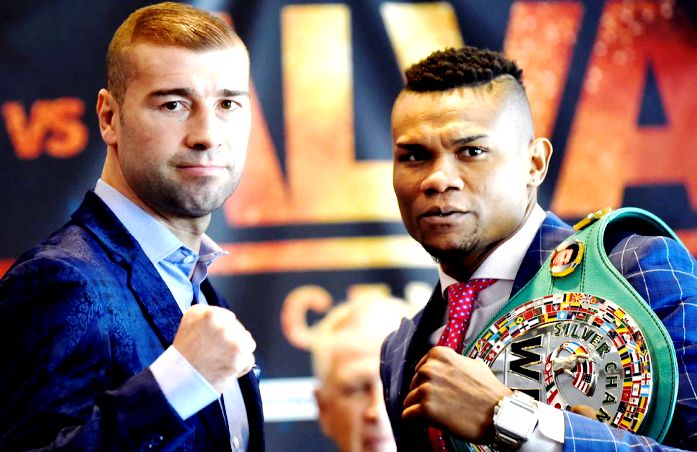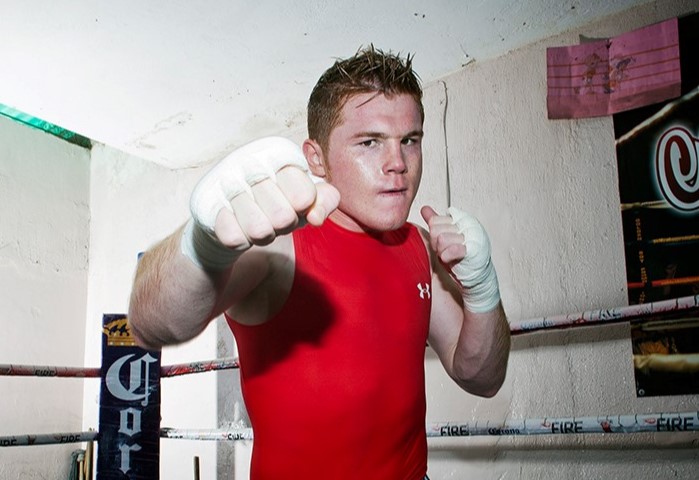Is Canelo The King At 168?
While some argue that advancements in sports science make modern athletes superior to their antecedents, the fact remains that the finest compliment that can be paid to a fighter is to say that they could have competed with the greats of yesteryear. Whatever fulsome adulation they might receive for conquering the best and brightest of their own era, however worshipful their fan base, all top operators strive to reach the same perihelion as the immortals – Sugar Ray Robinson, Henry Armstrong, Muhammad Ali, and the rest.
Unless there’s a Great Boxing Battle Royal beyond the pearly gates, we’ll never know how legends from different eras would match up against each another. Would Floyd Mayweather have outsmarted Ray Leonard? Would Manny Pacquiao’s firepower be enough to win a gunfight with Aaron Pryor? What about “El Gran Campeón” vs “Manos de Piedra,” or Benny Leonard against Pernell Whitaker? These hypotheticals are the domain of barrooms and barbershops, and they often proliferate when a current champion is consistently doling out memorable beatdowns.
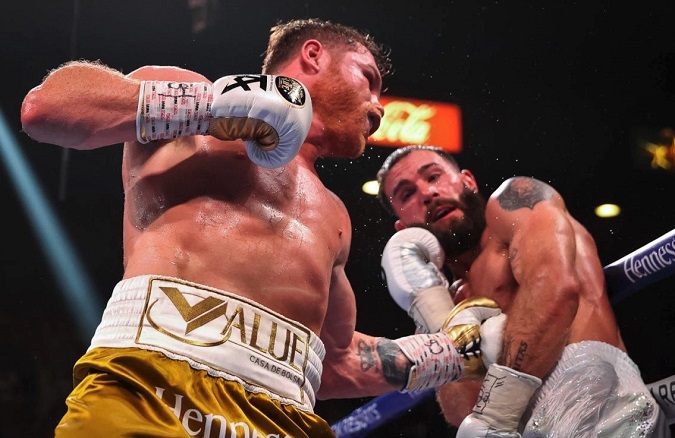
Over the last decade a few fighters have shared that mantle, among them Saul “Canelo” Álvarez, the flame-haired, four-division champ who built a reputation as a cool-headed assassin and spiteful badass. We can argue about which weight class suited him best, but given that he monopolized all four belts at 168 pounds – dominating foes with a combined record of 99-2 – and now holds a divisional record of 11-1 (4), it’s natural to wonder how he might have fared against the super middleweight greats of old.
Of course, some will dismiss this debate out of hand due to Canelo’s recent defeat to a smaller man in Terence Crawford. How can he be considered an all-time great super middleweight when he couldn’t impose his size and strength on a former lightweight? I get that, but are we so sure “Bud” wouldn’t have beaten some of the following names? And the Mexican has definitely lost a step in the last couple of years.
With signature wins over the likes of Golovkin, Kovalev, Plant, Saunders, Charlo and Munguia, Canelo deserves to be mentioned among the division’s greats. But would he have beaten them? Let’s take a look.
Roy Jones Jr — Record at 168: 11-0 (9) | Title: IBF 1994-1996
Roy Jones spent just two years in the super middleweight ranks, but his dominant victory over James Toney might be his best ever. That Roy, with his blinding hand- and foot-speed, crippling lead left hook and feline reflexes, would clearly present Canelo with a puzzle he’s never encountered.
Stylistically, it’s Jones’ athleticism, inventiveness and razzmatazz against Canelo’s patient, almost workmanlike economy. The logical question that springs to mind is, could such a style unduly trouble a prime Roy Jones? Wouldn’t the Pensacolan be too slick, quick and mobile for a Canelo that continually advances behind a tight guard and often does his best work when an opponent is pinned to the ropes?
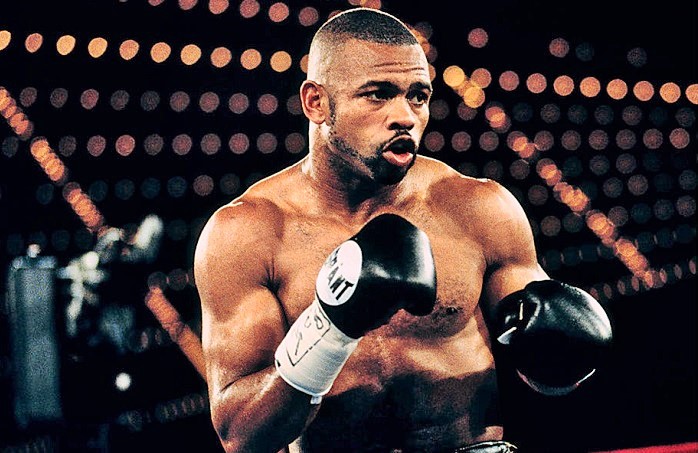
Canelo has a strong jab but it’s not a punch I see bearing fruit given Jones’ reactions and distance control. The Mexican would have to get his offence going somehow though, and I believe he’d look to impose himself by gradually closing the range and seeking a home for his explosive right hand. Meanwhile Jones deploys his own whirlwind offence, the left hook in particular working well: because Canelo holds his right glove so high, he doesn’t see it coming.
Álvarez definitely has his moments – a few thudding body shots, some chopping lead rights – but ultimately Jones courts the judges’ favor with his flashier and more consistent output. Don’t forget, Roy had stinging power, too, and he fought extremely well off the ropes: just as the jolting counters of Mayweather and Crawford made Canelo tentative, a similar story plays out here. Verdict: Jones by UD.
James Toney — Record at 168: 5-1 (4) | Title: IBF 1993-1994
James Toney’s battles with the scales were legendary. It’s why he had seven over-the-limit non-title bouts during his 21-month spell as IBF super middleweight champion. Of course, when “Lights Out” whipped himself into shape he could be phenomenal, a catch-and-counter specialist whose defensive nous suggests he mastered the shoulder roll in the womb.
Canelo vs Toney is probably the most mouthwatering collision we’ll consider here: two purebred natural fighters with elite ring IQs, outstanding defensive skills, natural counterpunching abilities, granite chins, knockout power, fast hands, imaginative offence… It just doesn’t get any better. So who wins: the Toney that pummelled Iran Barkley in 93 or the Canelo who ruled the super middleweight roost in 2021?

One interesting thing to consider is that both like to fight at their own unhurried pace and as such, it’s easy to see a high-quality chess match ensuing à la Toney-McCallum. A battle of fencing jabs as Toney circles and Canelo inscrutably advances, the contest would inevitably warm up as both unloaded their heavy artillery after the early scouting mission.
Álvarez wouldn’t have difficulty driving Toney to the ropes, since they were a second home for him; at close quarters the fistic pyrotechnics are a sight to behold, Canelo ripping body shots but struggling to land anything clean upstairs. A master of infighting, Toney parries, slips, rolls and returns fire, though the Mexican is quite evasive in his own right. So the action flows over 12 absorbing rounds, both refusing to be dominated. Verdict: Toney by SD.
Joe Calzaghe — Record at 168: 34-0 (22) | Title: WBO 1997-2007, IBF 2006, WBC 2007
Despite his gleaming record, Joe Calzaghe’s competition at super middleweight was, to put it mildly, not too hot. Of course, we’re not debating here the merits of Calzaghe’s opponents – but rather how Canelo’s skills would stack up against the “Pride of Wales” on his best night. As a first ballot Hall of Famer, Calzaghe’s greatness is inarguable, and his relentless volume punching and tenacity make him a tough foe for just about anyone.
The contrast between Calzaghe and Canelo couldn’t be starker: if the Welsh southpaw is a perpetual-motion machine, Canelo is a slow-and-steady kind of fighter. This is borne out by punch stats. Joe threw over 1,000 blows against Mikkel Kessler and nearly 950 against Jeff Lacy, yet Saul managed just 484 over the same duration against Callum Smith. This measured approach, with an emphasis on periodic salvos, puts the Mexican at an obvious disadvantage against a human cyclone like Calzaghe.
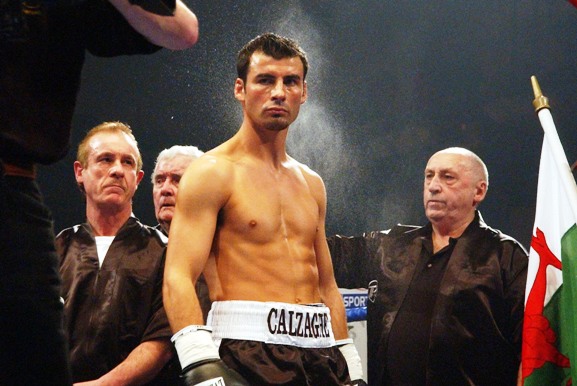
That said, the Welshman wasn’t infallible. He suffered flash knockdowns against both Kabary Salem and Byron Mitchell, and escaped with a contentious split decision over Robin Reid. Despite fielding a continual fusillade, Kessler also rocked him once or twice. With his superb timing and ring craft, Canelo could conceivably gain the upper hand despite being outworked.
Calzaghe sweeps the first three but Álvarez settles into the contest as his sharpshooting starts to pay dividends. It’s fiercely competitive through the middle phase, during which Canelo scores a knockdown with a cruise-missile right. Just as it appears he’ll wrest control though, Calzaghe ups the ante and pulls away down the stretch, his work-rate trumping Canelo’s moments of greater quality. Verdict: Calzaghe by hard-fought MD.
Andre Ward — Record at 168: 18-0 (9) | Title: WBA 2009-2013, WBC 2011-2012
A big-brained, fully-fledged super middleweight, Andre Ward would present Canelo with both a physical and intellectual challenge. “Son of God” knew every trick in the book and his combination of technical acumen and street smarts makes him a heavy favourite here. That said, I think Canelo has the tools to spring an upset.
Ward’s offence was never the most eye-catching: it was just damn effective. He’d make guys miss then counter and clinch and spin and reset, and he was so good at it, he’d invariably make opponents tentative or tire them out. But Canelo isn’t tailor-made for Ward’s style. He doesn’t barnstorm forward or leave obvious openings; he’s difficult to manhandle; he has a robust defence and head movement; and he’s an elite counterpuncher in his own right.
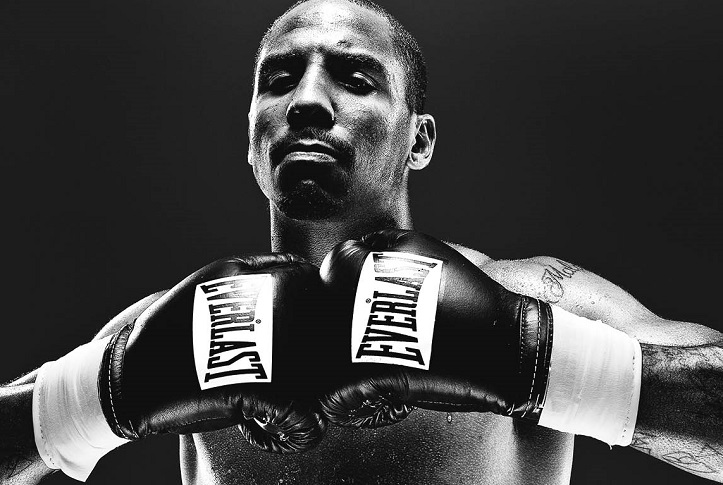
Saul’s opponents have prepared him well for a clash with Andre. Think about it: he’s fought physical bullies (Golovkin, Kovalev), awkward technical boxers (Lara, Trout), and elusive movers (Saunders). While he famously lost to a Ward-style prototype in Mayweather, the super middleweight Canelo is a much shrewder operator.
Don’t get me wrong, this is still an ultra-competitive match-up. Ward is a master at winning rounds, and he enjoys success with picador jabs to the body; he’ll also win his fair share of close-quarters exchanges due to his physical strength. But Canelo is simply better at landing the sort of crisp, judge-friendly flurries and machine-gun bursts that bring a crowd to its feet and shade close rounds. It doesn’t matter that these salvos often land on gloves; they make an impact. Verdict: Canelo by SD.
Carl Froch — Record at 168: 24-2 (17) | Title: WBC 2008-10 & 2010-11, IBF 2012-2014, WBA 2013-2014
It would be both easy and foolish to dismiss Carl Froch’s prospects against Canelo. The Nottingham puncher was a seriously hard man who had a knack for defying critics when backed against a wall. Losing to a resurgent Jermain Taylor in his first title defence, Froch picked himself off the floor and rallied to stop the ex-middleweight king in the last round. Knocked by a close points loss to Mikkel Kessler, he immediately bounced back to dominate Arthur Abraham. Let’s not forget the rematch wins over Kessler and Groves, plus the emphatic demolition of unbeaten Lucian Bute.
Is Canelo a vastly more talented operator? Absolutely. But Froch was a huge super middleweight with deep reserves of will and belief. He wasn’t easily discouraged and with his unconventional punching rhythm, bull-like strength and swarming style, he could certainly have his moments.
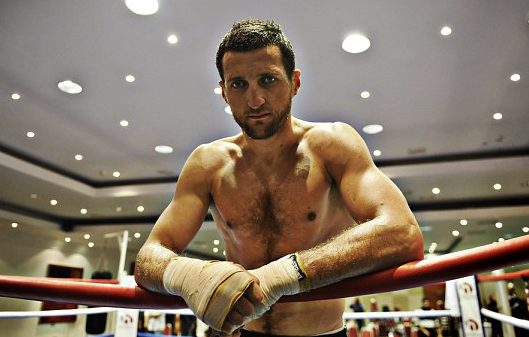
Can “The Cobra” really bring his strengths into play, though? Canelo has faster hands, a better defence and superior balance and mobility. The Brit’s mostly unguarded style would favour Álvarez’s efficient power-boxing style and Froch would have to weather some heavy thunder to get into punching range. When he does, though, he can make an impression: while fielding attacks Canelo is often content to cover up and take shots on gloves before emerging to pump the jab. At these moments I see Froch desperately whaling away with everything he has, aware he can’t compete with the Mexican from range. Froch isn’t a guy you want pounding away at your guard for long.
Yet Canelo is too clever to let “The Cobra” build a head of steam. He breaks his opponent’s nose with a guard-splitting right hand in the mid rounds and drops him with a pulverizing uppercut late to punctuate a clear points victory. Verdict: Canelo by UD.
Nigel Benn — Record at 168: 12-3-1 (7) | Title: WBC 1992-1996
At super middleweight, the Mexican’s seek-and-destroy style has mostly been employed against opponents who sought to steal a win by eluding his power and picking him off. “The Dark Destroyer,” on the other hand, will hurtle straight forward throwing bombs with brio. The high-octane pressure fighter was all-business during his WBC reign, registering five stoppages from eight successful defences, none more riveting than his come-from-behind TKO of Gerald McClellan in 1995. Tragically, “G-Man” never recovered from the effects of the war, which surely ranks as one of the most brutal ever contested in a British ring.
Action-wise, fans would be in for a treat in a blood-and-guts shootout that at times resembles Canelo’s dogfight with James Kirkland in 2015. The difference, though, is that Benn packs enough power to get Canelo’s respect. I actually see him stunning his man early, probably with one of those Hail Mary right hooks he liked to throw when rising from a low crouch.
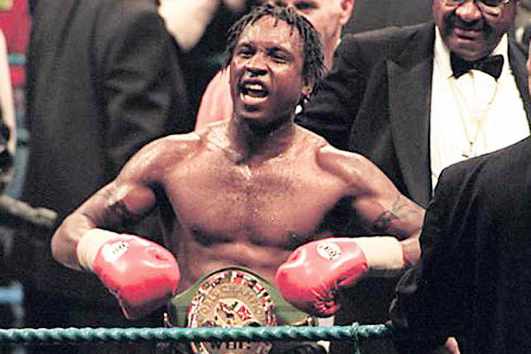
Benn’s rampant energy continues into round two, but Canelo is warming to the task and starts meting out some punishment of his own. Now it’s Benn’s turn to sway, after Canelo slips a right before nailing him in the ribs. The Brit was always at his most dangerous when wounded, and he fends off his advancing opponent with several wild haymakers. The subsequent rounds are give and take, though Álvarez’s superior timing and footwork are becoming evident as he exploits Benn’s openings and unloads damaging counters in return.
By the ninth, both of Nigel’s eyes are badly cut and swollen and with Canelo having taken his best shots, the corner sensibly opts to pull him out. Verdict: Canelo by late TKO.
Chris Eubank — Record at 168: 20-3-2 (7) | Title: WBO 1991-1995
Chris Eubank’s career was somewhat maligned, largely a consequence of his reluctance to compete on the biggest stage. While Benn went to America to blitz Barkley, Eubank stayed put and seemed uninterested in matching his talents against the likes of Toney, Jones and Nunn. Despite that, “Simply the Best” had plenty going for him in the ring: he was resilient, always in terrific shape, and he had an awkward strutting style that could throw off an opponent’s rhythm. Although he tended to win most of his fights over the distance, Eubank could also whack, as evidenced by his knockdown of the durable Steve Collins and his famous TKO of Benn.
Mindful of Canelo’s explosiveness, Eubank starts by circling in that curious praying mantis style of his, peering over his gloves held at chest height. Canelo sets the tempo, tracking Eubank and throwing range-finder jabs. The Brit had form for adopting the matador’s style when confronting high-quality opponents, and that’s what he does here, though the Mexican – so compact and tidy in his offence – leaves few openings.

The early rounds are tight, with neither landing anything of real significance, but the contest soon catches fire as Canelo tees off on Eubank with some ferocious body shots as the Brit lies on the ropes. He continues the assault in the middle rounds, rocking Eubank with a quickfire one-two. After soaking up the mounting pressure, Eubank manages to stun Canelo with a whipping uppercut in the eighth. With the pace having been steady rather than frenetic, both guys up their intensity in the championship rounds, Eubank throwing one-twos as he backpedals, Canelo stalking into range and landing some blockbuster rights. A valiant Eubank has had his moments but the winner is obvious. Verdict: Canelo by UD.
Steve Collins — Record at 168: 12-0 (9) | Title: WBO 1995-1997
Steve Collins was a seriously tough hombre. The rugged “Celtic Warrior” only ever lost to world-class fighters in Reggie Johnson, Sumbu Kalambay and Mike McCallum, all at middleweight in the early 90s, and on each occasion he acquitted himself well. A model professional with a good defence, high work-rate, granite chin and solid power, Collins is, in my view, a hard night’s work for even the best version of Canelo.
The styles here gel perfectly, with the Mexican favouring his preferred style of aggressive counterpunching and the Irishman happy to push forward with intelligent pressure. Collins was a terrific brawler, but he was cleverer and more resourceful than he was given credit for, particularly in terms of his balance and head movement. In the early rounds he wins Canelo’s respect with steady pressure, though Álvarez calmly moves around the ring and picks off some dazzling counters. Acutely aware that he needs to start winning rounds, Collins spends most of the fifth on his opponent’s chest as they trade fierce body attacks, pounding away at elbows and ribs. It’s a tactic he perseveres with, even as it becomes clear that Canelo operates just as efficiently inside.
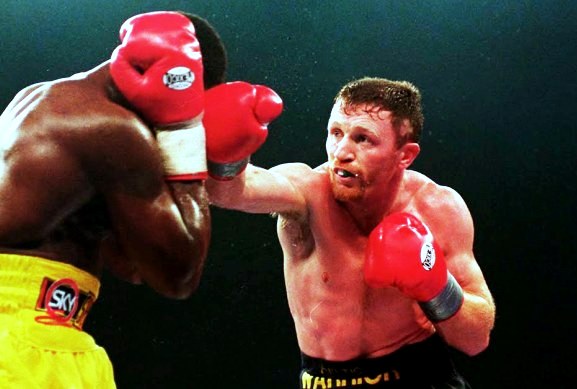
In the seventh, Canelo stuns Collins with a straight right hand off the ropes and pursues him across the ring. But the Irishman recovers quickly and launches his own swarming attack, having commenced the barrage with a jolting right hook as Álvarez bore down on him. Down the stretch Canelo has a healthy lead but Collins is utterly redoubtable, too pigheaded and strong to give up hope. In the end, Canelo’s greater accuracy, imagination and power win the day. Verdict: Álvarez by UD.
By my count, I’ve got Canelo winning five and losing three against the best super middleweights in history (for my money). How do you see it? — Ronnie McCluskey



